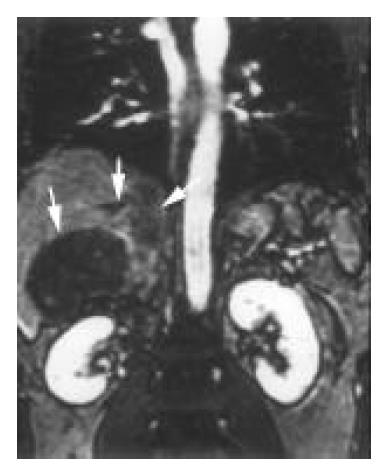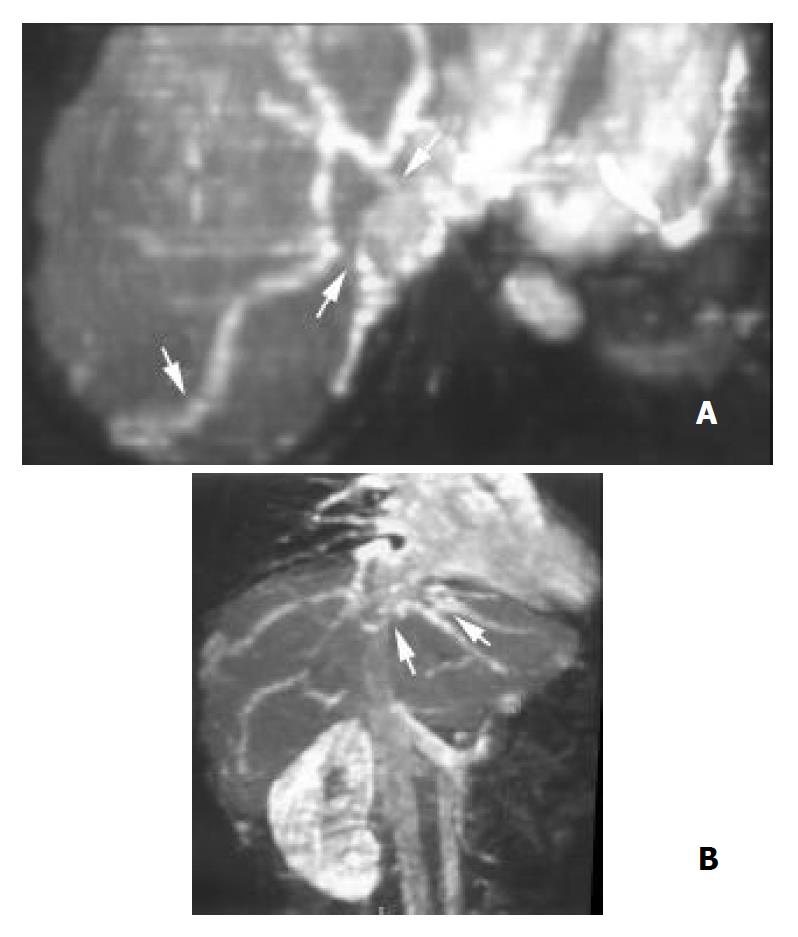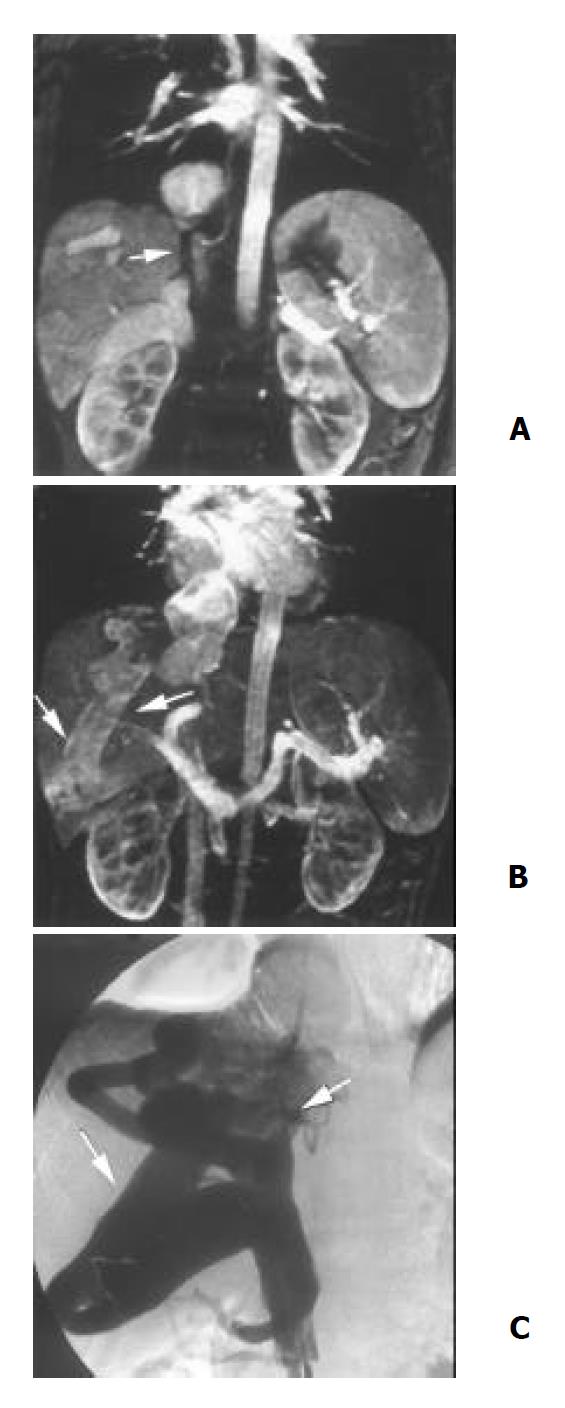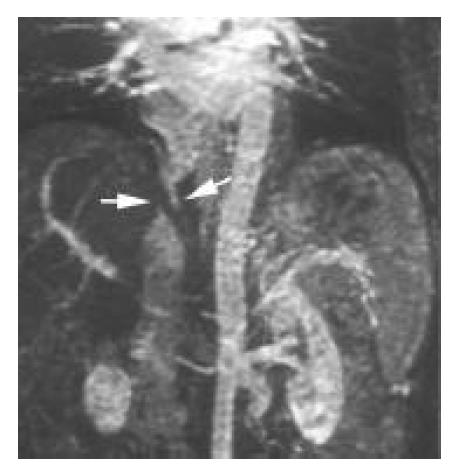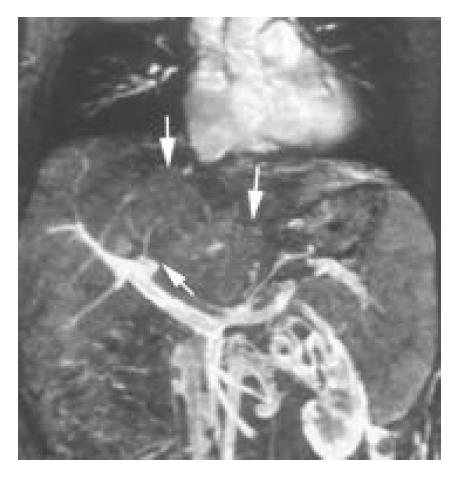Copyright
©The Author(s) 2003.
World J Gastroenterol. Oct 15, 2003; 9(10): 2317-2321
Published online Oct 15, 2003. doi: 10.3748/wjg.v9.i10.2317
Published online Oct 15, 2003. doi: 10.3748/wjg.v9.i10.2317
Figure 1 Source image of three-dimensional contrast-enhanced magnetic resonance angiography shows tumor thrombosis of the right hepatic vein (short arrow) and inferior vena cava (long arrow).
A hypointense hepatocellular carcinoma (arrowhead) is shown simultaneously.
Figure 2 A: Axial reconstruction of three-dimensional con-trast-enhanced magnetic resonance angiography demon-strates focal stenosis of right and middle hepatic veins (arrow heads).
Intrahepatic collateral between right hepatic vein and subcapsular vein is also demonstrated (arrow). B: Coronal reconstruction reveals fine collaterals between hepatic veins (arrows), resembling a “spider web”.
Figure 3 A: Source image depicts occlusion of the inferior vena cava(arrowhead).
B: Maximum intensity projection of three-dimensional contrast-enhanced magnetic resonance angiogra-phy depicts tortuous intrahepatic collaterals (arrows) between right inferior accessory hepatic vein and right main hepatic vein. C: Inferior vena cavography confirms the occlusion of the inferior vena cava (arrowhead) and the intrahepatic collaterals (arrow).
Figure 4 Three-dimensional contrast-enhanced magnetic resonance angiography identifies a septum (arrowheads) in the inferior vena cava.
Figure 5 Three-dimensional contrast-enhanced magnetic resonance angiography detects occlusion of the inferior vena cava(white arrowheads), prominent left renal-inferior phrenic-pericardiophrenic collaterals (arrows) and esophageal varix (black arrowhead).
Figure 6 Three-dimensional contrast-enhanced magnetic resonance angiography demonstrates occlusion of the left por-tal vein (arrowhead) and heterogeneous enhancement pattern of the liver (arrows).
- Citation: Lin J, Chen XH, Zhou KR, Chen ZW, Wang JH, Yan ZP, Wang P. Budd-Chiari syndrome: Diagnosis with three-dimensional contrast-enhanced magnetic resonance angiography. World J Gastroenterol 2003; 9(10): 2317-2321
- URL: https://www.wjgnet.com/1007-9327/full/v9/i10/2317.htm
- DOI: https://dx.doi.org/10.3748/wjg.v9.i10.2317









